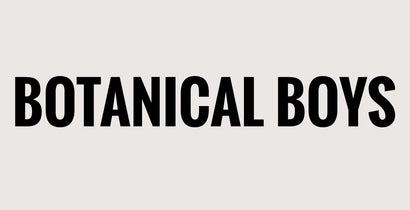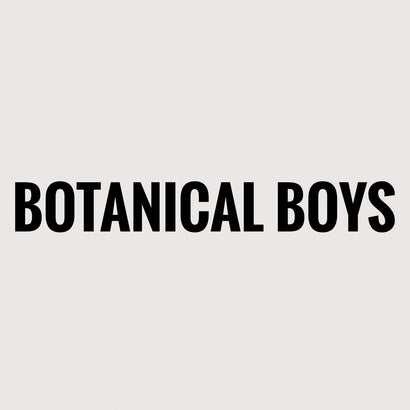LifeStyle
Terrariums & Plants
Workshops
Build Guide

TERRARIUM STEP by STEP GUIDE
Thank you for purchasing a Botanical Boys terrarium kit
We process all our kits by hand in our store by a dedicated team of plant lovers! A terrarium is a miniature living enclosed garden that survives on its own oxygen, carbon and humidity cycles. It's low maintenance but do read our care guide by clicking the QR code on your box or visiting our website terrarium section.
READY TO BUILD:
Before you start: Grab yourself an empty bowl, like a salad bowl or similar in which to place any waste material. Whilst you're in the kitchen, pop the kettle on and make a lovely cuppa too!
Step 1: Clay Pellets - Empty just enough of your clay pellets into the base of your glass vessel so it’s just one layer thick (you may have some spare left over depending on your jar choice you may not need to use all of it). Ensure there is no big gaps from looking down at the top layer. This provides a drainage layer and air pockets for moisture circulation.
Step 2: Sphagnum moss - Pull out the moss and break it up into smaller pieces. Have a little sniff of the moss, does it remind you of a nice walk in the park on a rainy day! The moss acts like a filter layer to prevent soil clogging up the clay. Spread a thin layer of the moss out across all of the pellets right up to the edge of the glass (like pancake thin covering all pellets) Use your cork tool or hands to flatten it down forming a seal. If you do not form a seal around edge the carbon & soil layers will fall in at the edges and may look a little untidy as a finishing design. Ideally you want your edging to be as neat as possible.
Step 3: Carbon - Carbon aids filtration of moisture in your terrarium. Sprinkle all of the carbon evenly across the moss layer.
Step 4: Substrate (Soil layer) - We use our very own blend of organic mix to enable your plants to have the best possible substrate to grow in. Evenly spread the substrate over the carbon layer & gently pressing it down. Ensure you have at least a cork depth thick of soil. How to measure: Place your cork tool next to your glass on the outside in an upright position. The bottom of the cork should start at the top of the moss layer. If you have soil up to the top of your cork then that is a good amount. If you have a ginseng tree in your kit then you need to add a bit more soil to ensure your tree is securely planted.
Now let’s get planting…
Step 5: Plants - Fittonia - (the colorful ones with little vein -like leafy structure) carefully remove them from the grow pot onto your palm and separate them at the root level to create smaller bunches. Then take the other plant in your pack and put it next to your fittonia to create a little bouquet. Gently shake off a little bit of soil from the roots and hold the bouquet firmly. Be sure to make a little hole in the soil then plant your bouquet and press the soil around the stem to ensure the plants are nice and firm and not flopping over!
Step 6: Decorative layers - Moss - place your lovely green piece of moss into an empty space to create a little hill scene. You may need to break it up a little to fit your empty space. Be careful not to break it up too small as the moss may not be as effective. Be sure not to show the roots, you just want to see green in your landscape. If you have a piece of moss with long brown roots then you can prune it off by clenching the green part of the moss in your palm and break away the brown roots to flatten the moss a little.
Decorative stones: Sprinkle in your decorative stones to the empty spaces, make a little pathway through your landscape or little beach area, be creative!
Decorative stones: Sprinkle in your decorative stones to the empty spaces, make a little pathway through your landscape or little beach area, be creative!
Please do share your terrarium on instagram!
Subscribe
Sign up to get the latest on sales, new releases and more …

